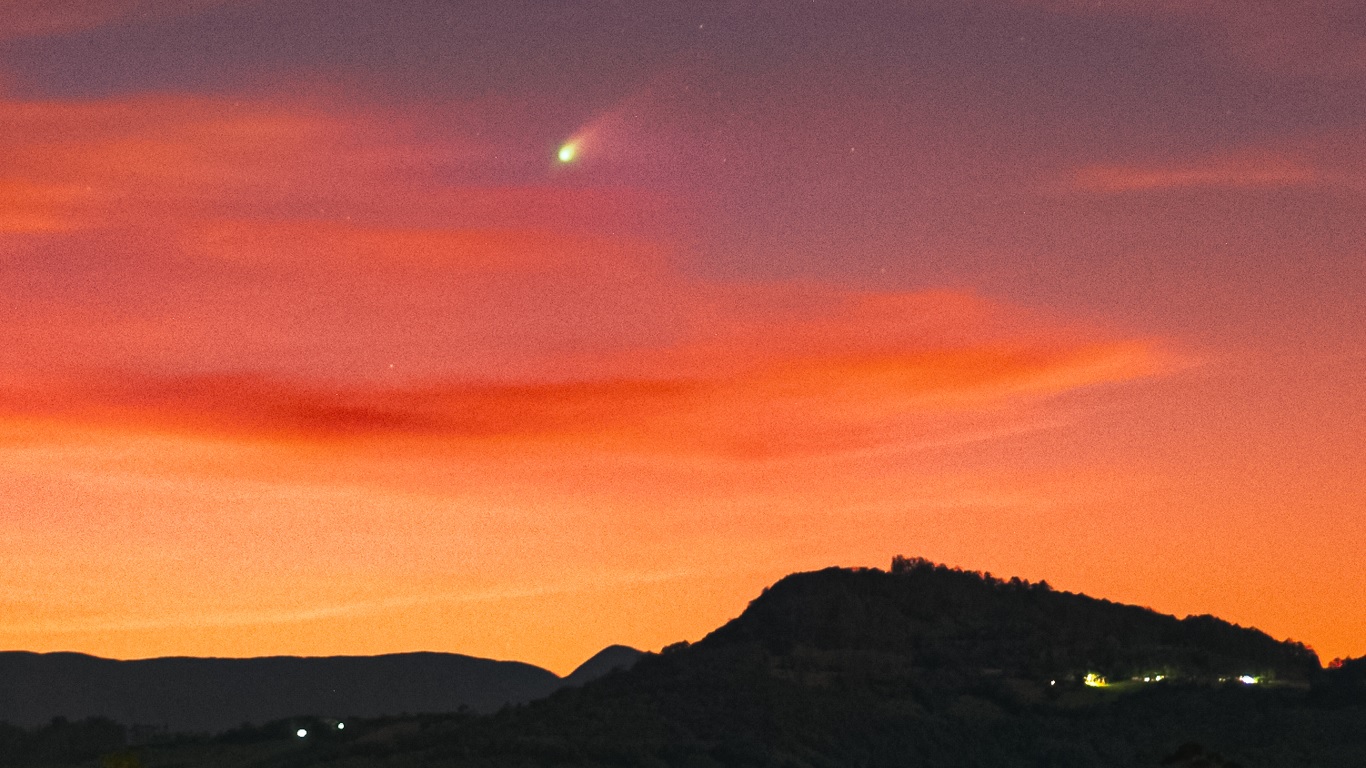CVometa 12P/Pons-Brooks, known as the “Devil's Comet”, was imaged in the late afternoon of April 17 on the north coast of Rio Grande do Sul above the Sierra | Gabriele Zaparoli
Comet 12P/Pons-Brooks, known as the “Devil's Comet”, can now be seen in the skies of Rio Grande do Sul, after days of closed and rainy weather. The open weather provided by the mass of dry, cold air ensures that it will be spotted from the comet on the northern coast of Rio Grande do Sul. . The record was captured by astrophotographer Gabriele Zaparoli yesterday in Torres.
Astronomers claim that the comet can be seen throughout Brazil, especially starting next week. 12P/Pons-Brooks or “Devil's Comet” will be at perihelion (the moment of maximum proximity to the Sun) on the 21st and, according to forecasts, should reach maximum brightness around the 23rd, when it becomes brighter and visible to celestial observers.
Experts believe that observation may be difficult with the naked eye and that binoculars or telescopes will make it easier to see the comet in the sky. Within cities, monitoring tends to be more difficult.
How to find the comet? It depends on the region of Brazil because the sun sets at different times in different areas of the country. Farther to the west of Brazil, in the north, the comet should be visible until around 8pm while further east, such as in the northeast, observing should take place in the late afternoon, around 6pm.
The observer must look towards the western horizon and in areas free of obstacles. The comet will appear in the lower part of the sky, directly above the horizon, moments after sunset. An alternative to better locate the comet is to download a sky visualization app, such as stars and planets, such as Sky Map.
But why is it called “Satan's Comet”? No, it is not the comet of Satan, nor is it a harbinger of hellish moments. The nickname, which many will say is in poor taste, is due to the comet's horn shape resulting from the pressure of solar radiation causing a twisted tail of gas and dust to appear in the sky. This comet often becomes brighter as a result of explosions of gas and dust beneath its surface.
2P/Pons-Brooks is a periodic comet with an orbital period of 71 years. Comets with an orbital period of 20 to 200 years are referred to as Halley's comets. It is one of the brightest periodic comets known, reaching an absolute visual magnitude of about 5 when it approaches perihelion.
Comet Pons-Brooks was discovered at the Marseille Observatory, France, in July 1812 by Jean-Louis Pons, and at its next appearance in 1883 by William Robert Brooks. There are ancient historical records of suspected comet 12P/Pons–Brooks sightings.
MetSul Meteorologia is available on WhatsApp channels. subscription here To access the channel in the messaging application and receive forecasts, alerts and information about the most important weather and climate events in Brazil and around the world, with exclusive data and information from our team of meteorologists.

“Incurable thinker. Food aficionado. Subtly charming alcohol scholar. Pop culture advocate.”


![[Atualizado] Players say Ghost of Tsushima update 2.19 “broken” the game](https://psxbrasil.com.br/wp-content/uploads/2022/06/ghostoftsushima_1080_2.jpg)




More Stories
[Atualizado] Players say Ghost of Tsushima update 2.19 “broken” the game
What will the new Apple model look like?
Instagram changes its algorithm and starts penalizing accounts that copy content